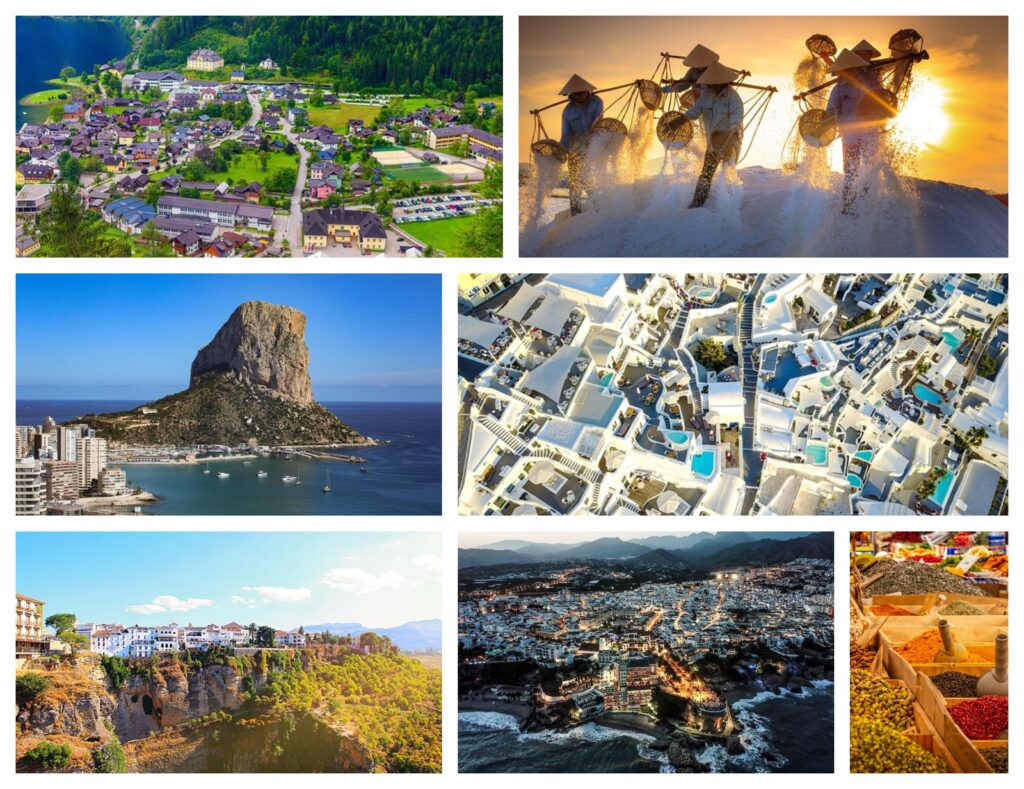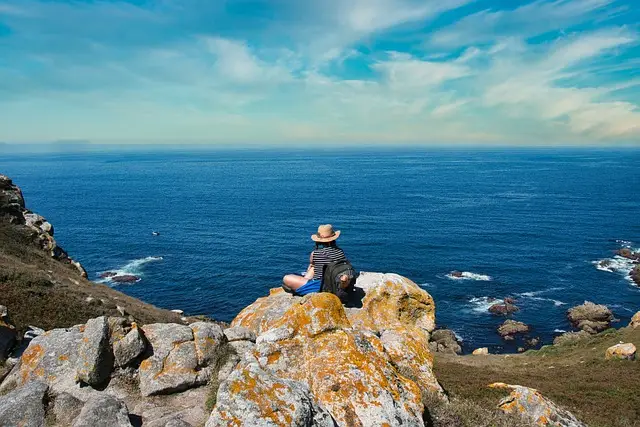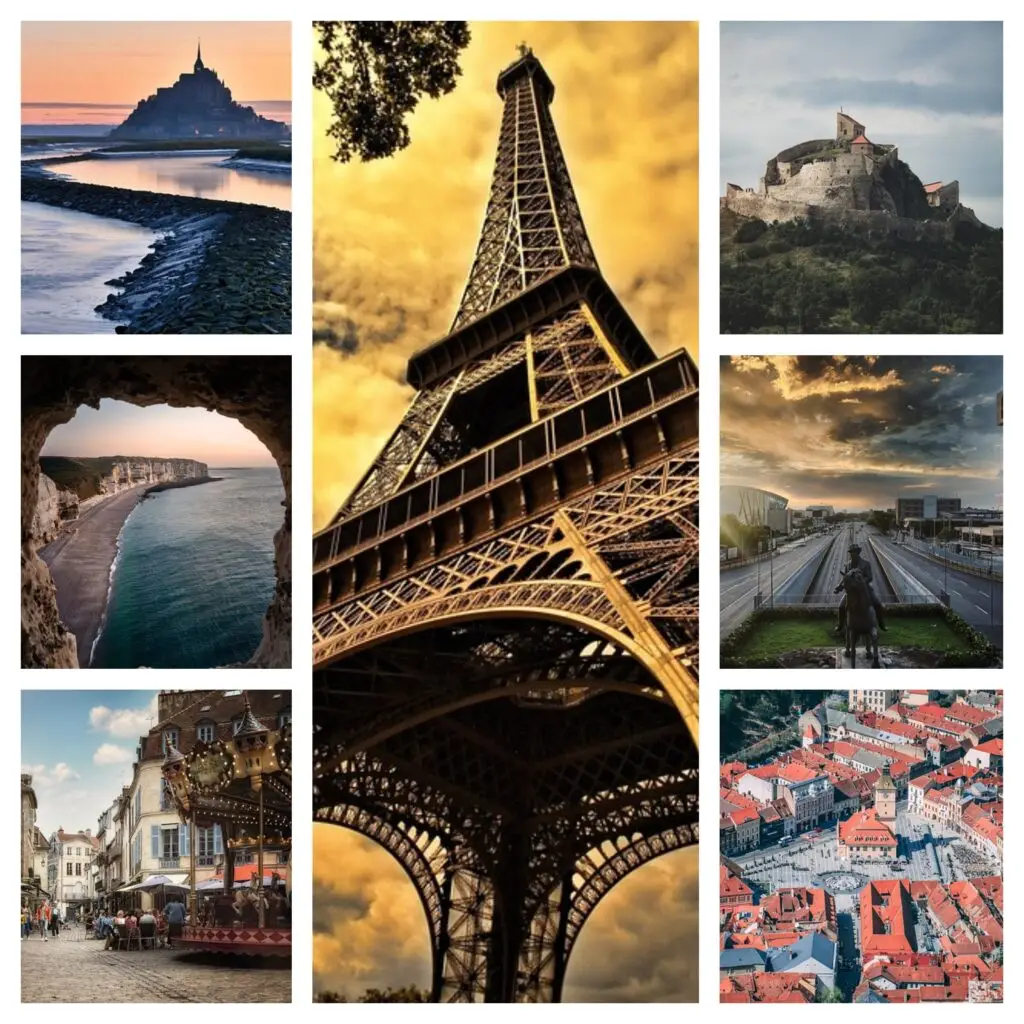Discover Europe’s charming villages for traditional Easter celebrations 2025. From painted eggs in Slovakia to bonfires in Greece, explore hidden gems.

1. Olympos, Greece: Oia, Santorini, traditional Easter celebrations
Olympos village adheres to Byzantineera traditions on the isolated Karpathos Island. Villagers get together at midnight on Greek Orthodox Easter to color eggs red (which symbolises Christ’s blood) and light bonfires that shine the mountains during the Anastasi Service. Whole lamb roasts and tsambouna (traditional bagpipe) dances are highlights of Easter Sunday.
The festivities reach a remarkable midnight Resurrection ceremony on Holy Saturday, signaled by candlelight and fireworks, starting with Holy Thursday services.
Memorial meals including lamb on the spit, magiritsa (Easter soup), and tsoureki (braided sweet bread) are relished during family gettogethers. The white churches and blue domes of Oia provide a pictureperfect setting for spiritual observance.
2. Hallstatt, Austria: Salt Mines & Easter Markets,
Traditional Easter celebrations
Austrian Easter tradition including Palm Sunday processions, elaborate hand-painted eggs, and regional folk music bring this Heritage site to life around Easter.
Highlighting regional crafts, traditional dishes such as Osterpinze (Easter bread), and floral ornaments, the Hallstatt Easter Market is one of the best features. Make sure you visit the local churches where villagers meet for candlelit masses marrying Catholic custom with Alpine enchantment.
A living postcard, this UNESCO recognized lakeside village is located. Hallstatt hosts a lovely Easter market during which companies sell hand carved wooden eggs and Osterbrot (sweet Easter bread). Locals welcome spring by decorating the town’s fountains with eggs and plants in the Easter Fountain Tradition.
3. Spain: Ronda, Verges
Head for Verges in Catalonia for an eery lovely Easter. Its Dansa de la Mort (Dance of Death) reenacts medieval Danse Macabre during Holy Week. Participants symbolize the transitory nature of life by donning skeleton outfits and parading down torchlit roads. The Gothic church of the village helps to create the creepy ambiance.
Don’t Miss: Good Friday’s Processó de les Verges with somber drummers and incense bearers.
Famous for its historical buildings and stunning views of the cliffsides, Andalusian town of Ronda is located in southern Spain. Ronda Easter traditions turns into a spiritual center during Spanish Holy Week with magnificent parades down little cobblestone roads.
Villagers in traditional robes carry religious artifacts from the centuries sold churches. Drums and sates (spiritual Easter songs) resound via the canyons. Guests can view flamenco, savor tapas, and surround themselves in one of the most fervent Easter parties in all of Europe.

4. Czech Republic: Markets & Handmade Crafts
One of the most beautiful Easter markets in Moravia is held in the UNESCO protected fairytale village of Telč. Pomlázka (braided willow branches) and delicately painted eggs abound throughout the primary square on stands. Ob haik dyeing and lacemaking techniques traditional, skilled artists perform exhibitions.
The Czech Easter villages Tradition, where boys softly whip girls’ legs for good luck (not to worry—they are merely gentle!).
With its Renaissance architecture and riverfront views, the medieval village of Český Krumlov provides a wonderful background for Easter. Czechs mark Easter with handmade items, folklore shows, and customary dishes including mazance (sweet Easter bread) and beránek (lamb cake).
In the town square on Easter in Czech Republic fair, the local artisans producing painted eggs (kraslice), wood carvings, and embroidered linens are shown. Families come together for music and narrative based on Slavic folklore; children engage in games and egg hunts.
5. Romania: Sibiu, Rural Rituals & Saxon Heritage
Viscri, Prince Charles’ preferred Transylvanian town, shows Saxon traditional Easter celebrations. Locals make pasca (sweet cheese bread) by using onion skins for deep red shades. In a midnight mass at the fortified church, local light candles from a single flame passed among the congregation.
Easter in Sibiu, a Transylvanian town of Saxon ancestry, combines Orthodox Christian customs with longstanding countryside customs. The Easter weekend here is characterized by painted eggs, lamb meals, and outdoor processions.
Following late mass at Orthodox Easter traditions, villagers don feasts with cozonac (sweetbread) and drob (lamb haggis) in their traditional embroidered clothing. Handpainted images and wooden goods that makes oneofakind keepsakes fill Sibiu’s Easter markets.
6. France: Eguisheim, Alsatian Charm & Wine
Halftimbered homes adorned in French Easter villages ornaments surround roads bordered by flowering tulips in Eguisheim traditions, Alsace. Marché de Pâques in the town will have regional wines, tarte flambée, and ceramic cuckoo birds. Easter Sunday sees kids searching for chocolate eggs in the gardens of Château SaintLéon.
Usually mentioned among the most beautiful villages in France, this Alsatian village has a mix of French Ester market and German traditional Easter celebrations. Painted eggs and garlands adorn half-timbered houses. With Easter crafts, local wine samplings, and artisanal cheeses, the Eguisheim Easter Market is a fairytale event.
Following Good Friday customs, church bells ring across the village, and mothers prepare Easter brunches including tarte flambée, lamb stew, and chocolate eggs from local chocolate makers.

Travel Tips for traditional Easter celebrations Escapes in Europe 2025
- Reserve Early: Easter is a wellliked travel period, therefore lodging in small towns might become fast full.
- For services, dress modestly: several hamlets have masses and religious processions, so respectful clothing is wanted.
- Greeting residents in their language with a basic “Happy Easter” goes far; learn few local idioms.
- Sample Local Easter Foods: Many villages have dishes available Easter only.
- Look on Event Calendars: Easter bonfires, egg dances, and blessing of the baskets are among some communities’ particular traditions.
The villages of Europe bring to mind that Easter is a canvas of renewal, community, and history much more than chocolate eggs. Whether you’re in Spain dancing with skeletons or in Slovakia whipping willow branches, these locations beckon you to enter a life storybook. Trade the known for the remarkable in 2024 and let these ageless customs reignite your curiosity.